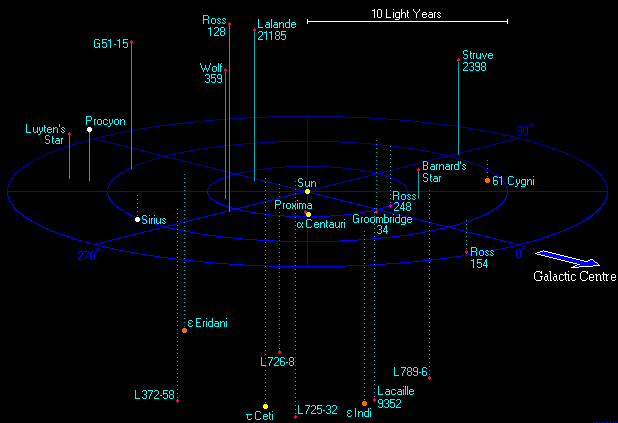Understanding the Universe
- Introduction to Cosmic Distance Ladder
- Astronomical Unit
- Standard Candles
- Cepheid Variables
- Tully-Fisher Relation
- Hubble's Law
- Cosmic Microwave Background
- Challenges and Limitations
- Course Review and Discussion
Light Year
Practical Examples of Distances in Light Years

Unit of length used to express astronomical distances, defined as the distance that light travels in a vacuum in one year.
The concept of a light year, while abstract, becomes more tangible when we apply it to real-world examples. In this unit, we will explore the distances to nearby stars, galaxies, and the size of the observable universe in terms of light years.
Distances to Nearby Stars
Our closest stellar neighbor, Proxima Centauri, is approximately 4.24 light years away. This means that the light we see from Proxima Centauri today actually left the star over four years ago. Similarly, the brightest star in the night sky, Sirius, is about 8.6 light years away. The light we see from Sirius today started its journey towards us when Barack Obama was just beginning his second term as President of the United States.
Distances to Galaxies
When we move beyond our own Milky Way galaxy, the distances become truly mind-boggling. The Andromeda Galaxy, our closest spiral galaxy, is approximately 2.537 million light years away. This means the light we see from Andromeda today began its journey towards us around the time our early human ancestors were first learning to use stone tools.
Even more distant is the Whirlpool Galaxy, also known as M51, which is about 23 million light years away. The light we see from this galaxy started its journey towards us when the first mammals were beginning to appear on Earth.
The Size of the Observable Universe
The observable universe is estimated to be about 93 billion light years in diameter. This number is derived from the age of the universe (approximately 13.8 billion years) and the fact that space itself has been expanding since the Big Bang. This means that the light from the most distant objects we can observe began its journey towards us nearly 13.8 billion years ago, but those objects are now much further away due to the expansion of the universe.
In conclusion, the concept of a light year allows us to comprehend the vastness of the universe in a more tangible way. By understanding that when we look at the stars, we are essentially looking back in time, we can begin to appreciate the immense scale and wonder of the cosmos.